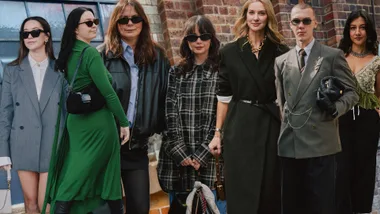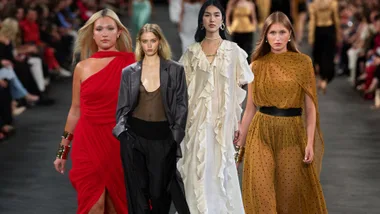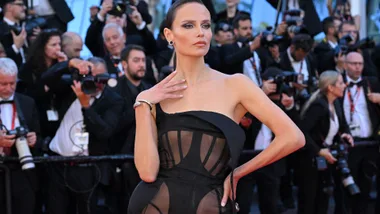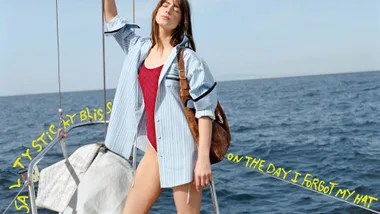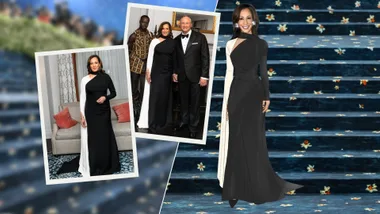Rich with culture, community ties and creative collaboration, Australia’s First Nations fashion industry is teeming with talent. We’re proud to announce the winners of the inaugural National Indigenous Fashion Awards, presented by the Darwin Aboriginal Art Fair Foundation.
Charlee Fraser and Billie-Jean Hamlet are two of Australia’s top models, with Charlee walking for Prada, Christian Dior and Chanel overseas, and Billie-Jean fronting campaigns and runways for iconic Australian labels Country Road, David Jones and Camilla. And yet, they’ve never done a fashion shoot with all-Indigenous fashion. Until today. “When I walked in and saw these beautiful Indigenous headpieces, bags, hats and textiles, I was so excited. It means so much to me,” says Charlee, an Awabakal woman from Newcastle.
The shoot was equally special for Billie-Jean, who grew up in the remote community of Ngurtuwarta in Fitzroy Crossing, Western Australia. “It was extremely empowering and I felt so honoured to celebrate the NIFA winners.” Those six winners are based all over Australia, where they hone their craftsmanship, or – in the case of Ninti One Ltd – work with remote communities and push for a better world. Without further ado, here they are…
Julie Shaw, Maara Collective
Fashion Design Award
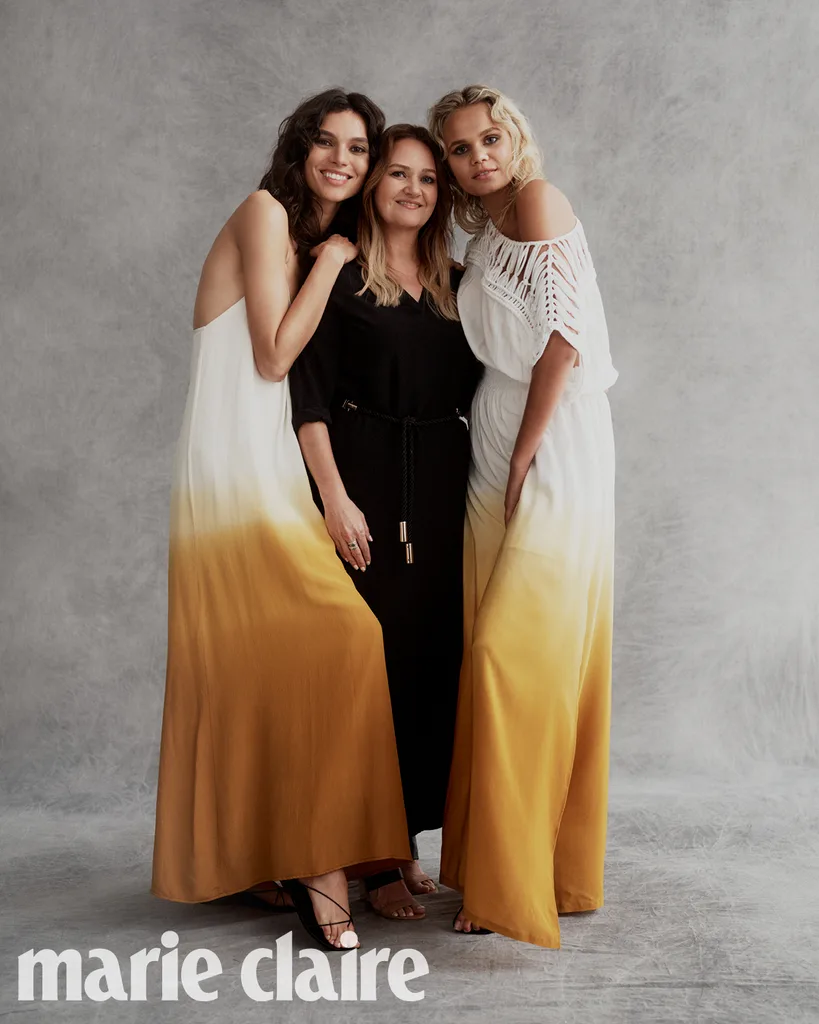
In the Yuwaalaraay and Gamilaraay language group, Maara means hands. Julie Shaw named her fashion label Maara Collective to honour the “many hands” involved in the creative process of bringing a collection to life (such as this dreamy fringed design modelled by Charlee Fraser). Now, it’s our turn to put our hands together for Julie, who has won two National Indigenous Fashion Awards, including the prize for Fashion Design. “To be recognised among my peers, other Indigenous artists, designers, makers, creators, is a real honour,” says Julie, who grew up in Lightning Ridge on Yuwaalaraay Country, NSW, and has found inspiration in her community. “I think that Indigenous artists and artisans have a naturally collaborative approach to working that is intrinsic to our way of being – sharing is such a strong cultural value. There is always a deeper level of meaning to our designs and collections.” The story of Maara Collective is rooted in Julie’s Indigenous heritage and her inherent creativity. Her gorgeous silk pieces are hand-dyed ombre like a sultry Lightning Ridge sunset, welcoming traditional techniques into the contemporary fashion space. Julie debuted her label to a full house at the From Country to Couture runway show in Darwin in 2019. “The atmosphere was electric. The support for the designers was incredibly powerful and inspirational. It just felt like we were on the brink of something amazing … It was as if people were finally sitting up and taking notice of this ‘movement’, which is happening in Indigenous art and design,” says Julie, who is a leading force in the movement and working on a new resort collection for summer, as well as a collaborative jewellery line with an Indigenous artist based in Sydney.

Peggy Griffiths
Cultural Adornment and Wearable Art Award
Peggy Griffiths has been painting for 26 years. She learnt her craft from her mother, Dinah, in a little tin shed in Kununurra, in Western Australia, drawing inspiration from the town’s red dirt, grey boab trees and aqua watering holes. Now, she’s sharing her talent and wisdom with the next generation, as a senior artist, cultural leader and board director at Waringarri Arts. In a workshop with First Nations Fashion + Design, she created the Legacy Dress, featuring layers of linen and canvas hand-painted by Peggy and depicting the jilinybeng (bush cucumber). The other layers were made by Peggy’s granddaughters, who have followed in their grandmother’s footsteps as successful textile artists. “The Legacy Dress has brought young artists together through a form of art they enjoy – fashion. Doing this and putting all the material together made the dress strong and made me and my granddaughters stronger,” says Peggy of her award-winning piece. “Working with young artists can be a tool to pass [on] knowledge and history through art and fashion. This dress has been a tool to encourage them to connect to their country and culture.” Long may Peggy’s knowledge live.

Kieren Karritpul (Merrepen Arts, Language & Culture)
Textile Award Design
When Kieren Karritpul was a newborn baby in hospital, his mother whispered in his ear that he would be an artist, like her. She handed him his first paintbrush when he was three, and he hasn’t put it down since. At 25, he is an internationally recognised, award-winning talent. “I like painting big to keep me busy and occupied. When I’m painting, it takes me to another world. It takes me to a place where I feel relaxed,” explains the artist and fabric designer from Nauiyu in the Northern Territory, who finds inspiration for his art in the fishing nets of his youth and local Dreamtime stories about serpents and mermaids. “I work at Merrepen Arts Monday to Friday doing painting, printing, hatching and weaving.” Kieren’s screen-printed fabrics, which are stocked at Darwin’s Clothing Hub, Bush Traders and Raw Cloth, are more than just beautiful textile pieces, they’re an ode to Australia’s natural landscape and waterways, telling the stories of his culture. This year, his important work will feature in the Aboriginal Screen-Printed Textiles from Australia’s Top End exhibition at the Fowler Museum in LA. Despite his worldwide acclaim, Kieren is modest about his extraordinary gift, which was foretold by his mother and grandmother. “When I came back home [from the hospital], my grandmother whispered into my ear to be humble. I like doing art because it’s important to tell all stories in a new way,” he says, with a shy laugh.

Julie Shaw x Bula’bula Arts
Community Collaboration Award
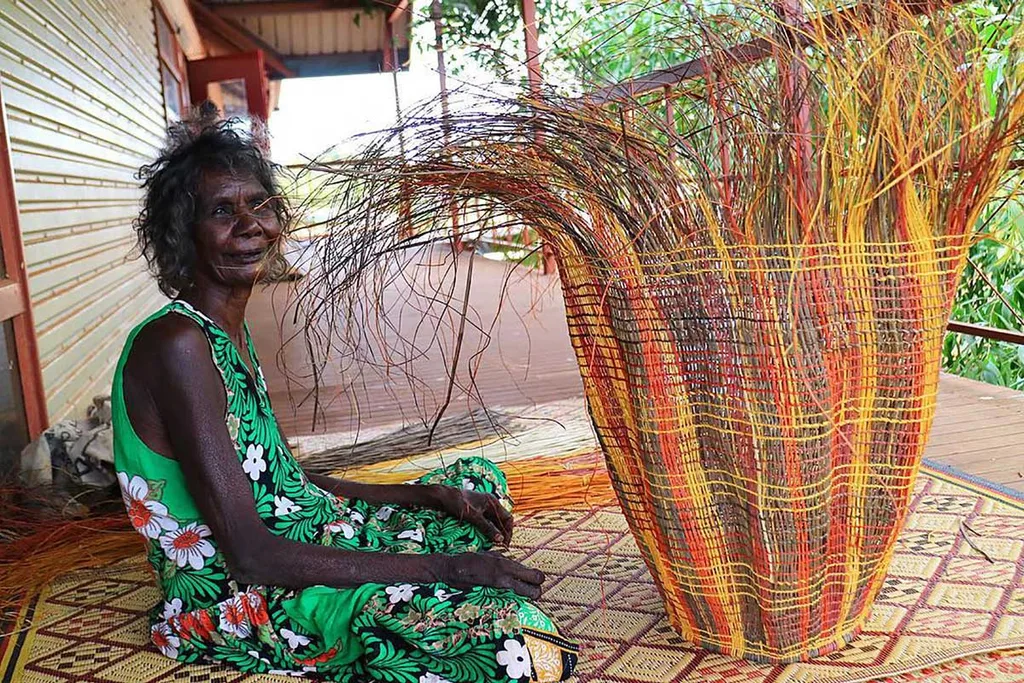
Stepping onto the From Country to Couture runway last year at the Darwin Aboriginal Art Fair, the Yolngu women of the Bula’bula Arts centre glowed with pride and smiled sheepishly as they took a bow next to Maara Collective designer Julie Shaw after seeing their woven masterpieces modelled down the runway. Mary Dhapalany, Evonne Munuyngu and Margaret Malibirr are all master weavers from Arnhem Land. “They have been weaving since they were very young children (Djamakurli). They learnt from their grandmothers, their mothers and their aunties by helping to collect the pandanus and harvesting the materials and then slowly trying things they have learnt by watching. Their hands are shaped by the making of pandanus objects,” explains Hilary Crawford, CEO of Bula’bula Arts Aboriginal Corporation, who welcomed Julie to Yolngu country to work with the master weavers on a collection of accessories. “I flew to Darwin and then boarded a smaller plane to Arnhem Land, watching the landscape change before we landed on a tiny little runway strip,” recalls Julie, who spent two weeks with the ladies in May last year, working with them every day in the arts centre, harvesting the pandanus leaves for the weaving and digging for plant roots for the natural dyes. “It was a magical experience, fulfilling a creative dream. Being in the presence of such prominent women was a real honour.”

Bede Tungutalum
Special Recognition Award
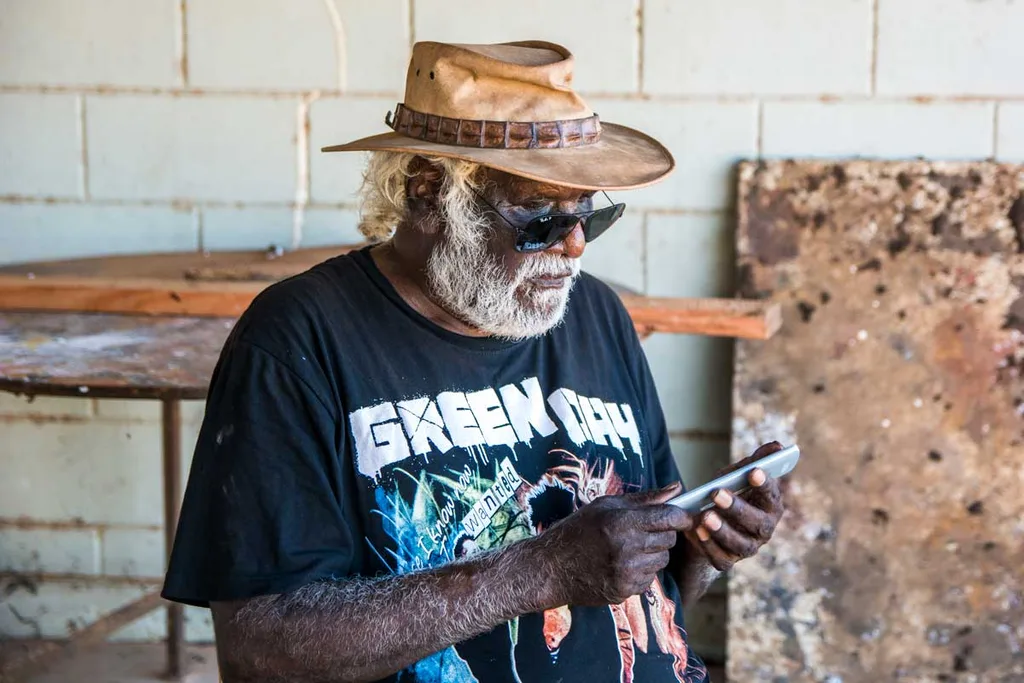
Charlee Fraser is hidden beneath a stretch of billowing silk, its rich colours and striking patterns casting shapes around the studio. “It’s intricate and has strength and balance,” explains artist Bede Tungutalum. “It’s [inspired by] a ceremonial spear. When designing it, I was thinking about the old people who used to make these types of spears; these skills are being lost.” A legend on the Australian art scene, Bede founded the iconic Tiwi fabric label Tiwi Design with Giovanni Tipungwuti in 1970. His work evolved from block to screen printing, as well as hand-painting onto fabric. This particular design, a digital print titled “Arawunikiri”, was created to celebrate 50 years in business, and will be crafted into clothing by local Tiwi label Bima Wear. Reflecting on this milestone anniversary (and another award to add to his already lengthy résumé), Bede finds himself looking forward: “My work is a continuation of our culture, it comes from the past and into the future.”
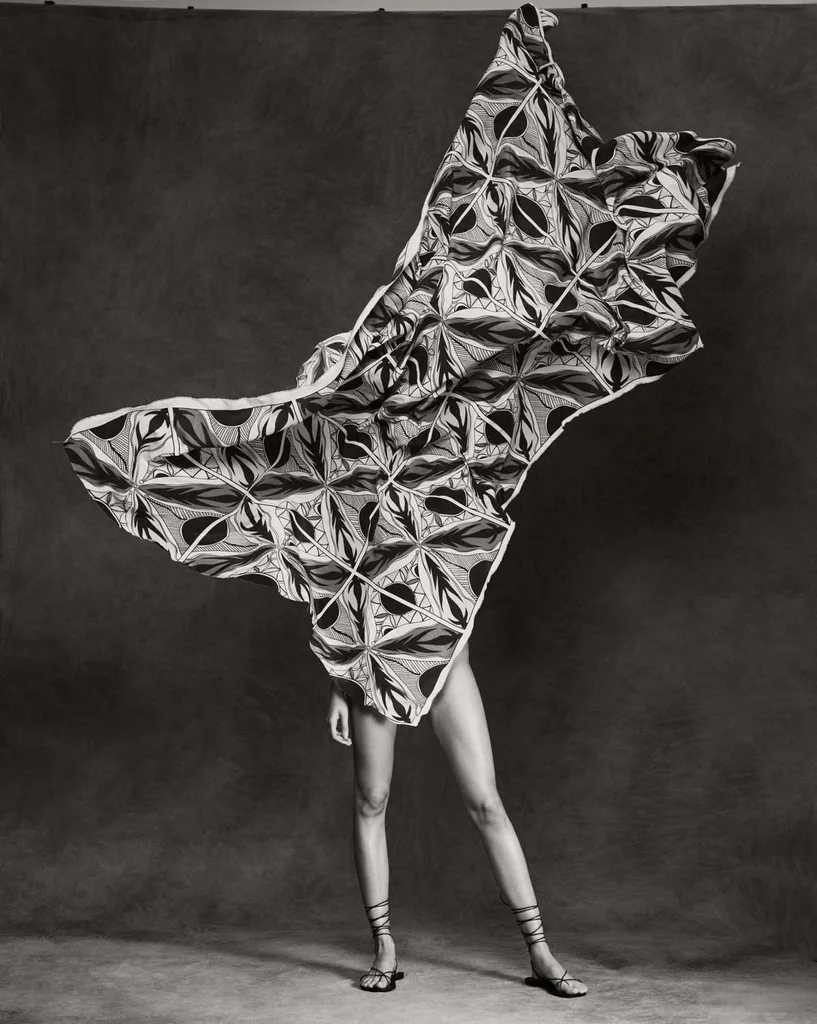
Ninti One Ltd
Social and Environmental Contribution Award
Ninti One means “clever one” in Arrernte Aboriginal language. Which is fitting, because the national not-for-profit uses savvy and smarts to solve the problems facing some of the world’s most disadvantaged communities. “We do projects that create economic opportunity and boost the livelihoods of indigenous people living in remote areas in Australia and overseas,” explains the company chair, Alison Page. Recently Ninti One took its knowledge of Aboriginal art and fashion economies to Papua New Guinea. There, vibrant string bags known as bilum are not only a vital source of income for female artisans, but infused with cultural and emotional significance: newborn babies sleep in them; they carry food and firewood; and the craft is passed down from one generation to the next.

NCIE chair Alison Page.
Yet today, cheap, imported machine-made bilums at local markets are threatening women’s livelihoods. Enter Ninti One, who advocated for law reform and worked with locals to create an intellectual property framework. “Archaeological records show that PNG and Indigenous Australia have been connected for around 3000 years, in which time First Nations have exchanged ideas, language and cultural materials across the Coral Sea,” explains Page. “Storytelling, art and craft-making are a crucial part of their cultural expression, linking their people across thousands of years to the land, sea, sky and their ancestors. So protecting IP is sustaining cultural identity across generations.”

This article originally appeared in the September issue of marie claire.

